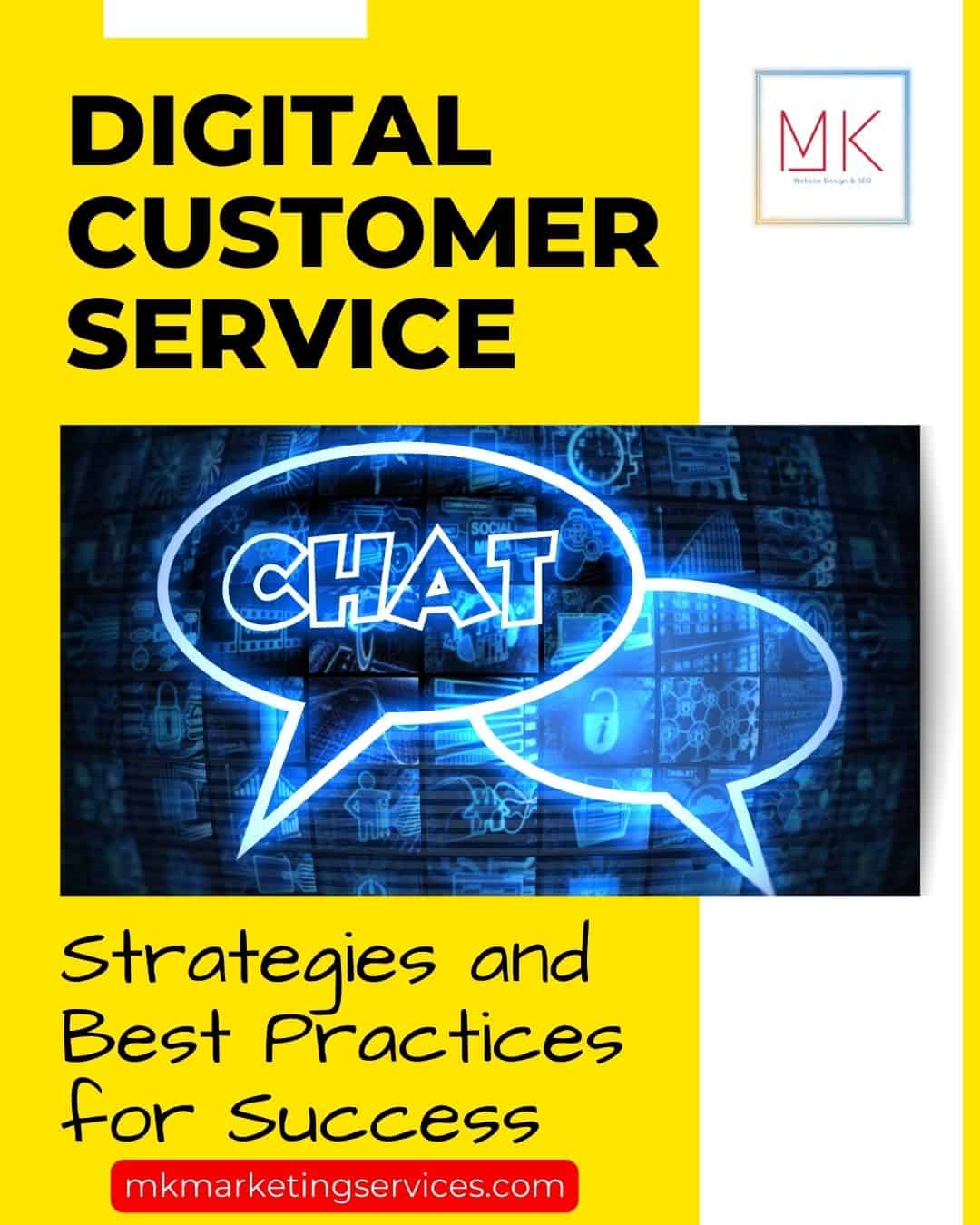The world of customer service has evolved significantly in recent years with the advent of digital technology. Traditional customer service channels like phone and email are being supplemented with newer digital channels like social media, chatbots, and self-service portals. This digital transformation has made it easier for businesses to interact with their customers and offer faster, more convenient support. In this article, we will explore some strategies and best practices for digital customer service that can help businesses succeed in today’s fast-paced environment.
Offer multiple channels for customer support
The first step in developing a successful digital customer service strategy is to offer multiple channels for customer support. Customers expect to be able to reach businesses through their preferred channels, whether that’s social media, email, chat, or phone. By offering multiple channels, businesses can meet customers where they are and provide a seamless support experience across all channels. Here are some of the most popular and effective online channels that businesses can use to support their customers:
Email Support: Email support is a popular customer support channel that allows customers to submit their inquiries or issues via email. It is an asynchronous channel, meaning that customers can send their messages at any time, and customer support agents can respond during their regular business hours. Email support is suitable for handling complex issues that require a detailed response and can be used to maintain a record of customer interactions.
Live Chat: Live chat is a real-time customer support channel that allows customers to communicate with customer support agents through a chat window on the business’s website. Live chat is preferred by many customers as it allows for quick, real-time support without the need to wait on hold or deal with automated phone menus. It is also a cost-effective option for businesses as it allows customer support agents to handle multiple chats simultaneously.
Phone Support: Phone support is a traditional customer support channel that allows customers to speak with a live agent over the phone. Phone support is suitable for handling complex issues that require a real-time conversation and can be used to provide a personal touch to customer support interactions. It is essential to provide prompt answers and solutions to customer issues to ensure that customers are satisfied with the level of support they receive.
Social Media Support: Social media support is a customer support channel that allows customers to contact businesses through social media platforms like Facebook, Twitter, and Instagram. It is an excellent channel for businesses to interact with customers in real-time and address their concerns quickly. Social media support is preferred by many customers as it provides a public forum to raise their issues and concerns, and businesses can use this opportunity to showcase their responsiveness and transparency.
Self-Service Portals: Self-service portals are online platforms that allow customers to find answers to their queries and issues independently. These portals can include FAQs, knowledge bases, and forums where customers can find solutions to common problems. Self-service portals are an excellent option for handling simple issues, which can free up customer support agents to handle more complex issues.
Chatbots: Chatbots are an artificial intelligence-powered customer support channel that allows businesses to automate responses to common customer queries. Chatbots can handle simple inquiries and direct customers to self-service portals or human agents for more complex issues. Chatbots are available 24/7 and can handle multiple customer inquiries simultaneously, making them a cost-effective option for businesses.
Optimize your website for self-service
In addition to offering multiple channels for customer support, businesses should also optimize their websites for self-service. Self-service portals and knowledge bases can help customers find answers to common questions without having to contact customer support. This not only saves time for the customer but also frees up customer support agents to handle more complex issues. Here are some of the most common options for optimizing your website for self-service:
Create an FAQ Section: An FAQ (Frequently Asked Questions) section is a valuable resource for customers looking for answers to common questions. By providing answers to frequently asked questions, businesses can reduce the number of support requests and improve the customer experience. The FAQ section should be well-organized, easy to navigate, and regularly updated to reflect new products or changes in policies.
Implement a Knowledge Base: A knowledge base is a centralized database that provides customers with in-depth information on products, services, policies, and procedures. It can include articles, tutorials, videos, and other resources that customers can use to find solutions to common problems. A well-structured and comprehensive knowledge base can help reduce support requests, increase customer satisfaction, and improve the overall customer experience.
Provide a Chatbot: A chatbot is an AI-powered tool that can provide customers with immediate answers to their queries. It can handle simple inquiries and direct customers to self-service options or human agents for more complex issues. A chatbot can be available 24/7 and can handle multiple inquiries simultaneously, making it a cost-effective option for businesses.
Offer a Community Forum: A community forum is a platform that allows customers to interact with each other, share ideas, and find solutions to common problems. It can provide customers with a sense of community and support, while also reducing the number of support requests. Businesses can also use forums to gather feedback, identify common issues, and improve their products or services.
Provide a Search Bar: A search bar is a simple and effective way to help customers find the information they need quickly. It should be prominently displayed on the website, and the search functionality should be optimized to provide accurate and relevant results.
Use Video Tutorials: Video tutorials are an engaging and effective way to provide customers with visual demonstrations of how to use products or services. They can be used to explain complex procedures, highlight key features, and provide step-by-step instructions. Video tutorials can be included in the knowledge base or on the product or service pages.
Make your customer service competitive
Now that we have explained how you offer customer service. You need to make your customers feel special by personalizing your interactions and by responding quickly to be competitive so that they feel listened to.
Personalize your customer interactions: Personalization is key to providing excellent digital customer service. Customers want to feel valued and appreciated, and businesses can achieve this by personalizing their interactions. This can be as simple as addressing the customer by name or referencing their previous interactions with the business. Personalization can also be achieved through data analysis, which can help businesses make personalized recommendations to customers based on their previous interactions and purchase history.
Respond quickly to customer inquiries: Speed is of the essence when it comes to digital customer service. Customers expect quick responses to their inquiries, whether that’s through email, chat, or social media. Businesses should have systems in place to respond to customer inquiries in a timely manner, even outside of regular business hours. This can be achieved through automation tools like chatbots or by having dedicated customer support agents working around the clock.
Use data to improve customer service
Data analysis is also an essential tool for improving digital customer service. By tracking customer interactions across multiple channels, businesses can identify patterns and trends in customer inquiries and use this information to improve their support offerings. Data analysis can also help businesses identify areas for improvement in their self-service portals and knowledge bases.
Data analysis can also help businesses to identify trends in customer behavior. For example, if customers are frequently searching for information on a particular product or service, a business could consider creating more detailed product pages or adding more information to their knowledge base. By using data to understand customer behavior, businesses can tailor their support offerings to meet the needs of their customers and improve the overall customer experience.
Encourage customer feedback
Customer feedback is a valuable source of information for businesses looking to improve their digital customer service. Encouraging customers to provide feedback through surveys, social media, or review sites can help businesses identify areas for improvement and make changes to their support offerings. Businesses should also respond promptly and professionally to all customer feedback, whether positive or negative. Here are some common options for encouraging customer feedback:
Surveys: Surveys are a common way to gather feedback from customers. They can be sent via email, embedded on a website, or provided at the end of a customer service interaction. Surveys can include open-ended questions or multiple-choice questions and can provide valuable insights into customer satisfaction, preferences, and pain points.
Feedback Forms: Feedback forms can be a simple and effective way to gather feedback from customers. These forms can be placed on a website or within a mobile app and can be customized to gather specific information from customers. Feedback forms are easy to use and can be accessed by customers at any time, making them a convenient way to gather feedback.
Social Media: Social media platforms like Twitter, Facebook, and Instagram can be used to gather customer feedback. By monitoring social media channels, businesses can identify customer concerns and respond in real time. Social media can also be used to solicit feedback by asking customers to share their experiences or opinions on a particular product or service.
Live Chat: Live chat can be an effective way to gather feedback from customers in real-time. Live chat allows customers to ask questions or voice concerns, and businesses can use this information to identify common issues and pain points. Live chat also provides an opportunity for businesses to address customer concerns quickly and efficiently.
Online reviews: Online reviews are another effective way to gather customer feedback. By monitoring online review sites like Yelp, Google Reviews, or TripAdvisor, businesses can gain valuable insights into customer satisfaction, preferences, and pain points. Online reviews can also be used to identify common themes or issues that customers are experiencing, which can help businesses to improve their products, services, or customer service offerings.
In conclusion, digital customer service is a critical component of modern business operations. With the increasing prevalence of digital technology and the growing expectations of customers, businesses must adopt a strategic approach to customer service. By implementing these strategies and best practices, businesses can offer a seamless and satisfying support experience to their customers, which can lead to increased customer loyalty, higher satisfaction rates, and, ultimately, increased revenue.













